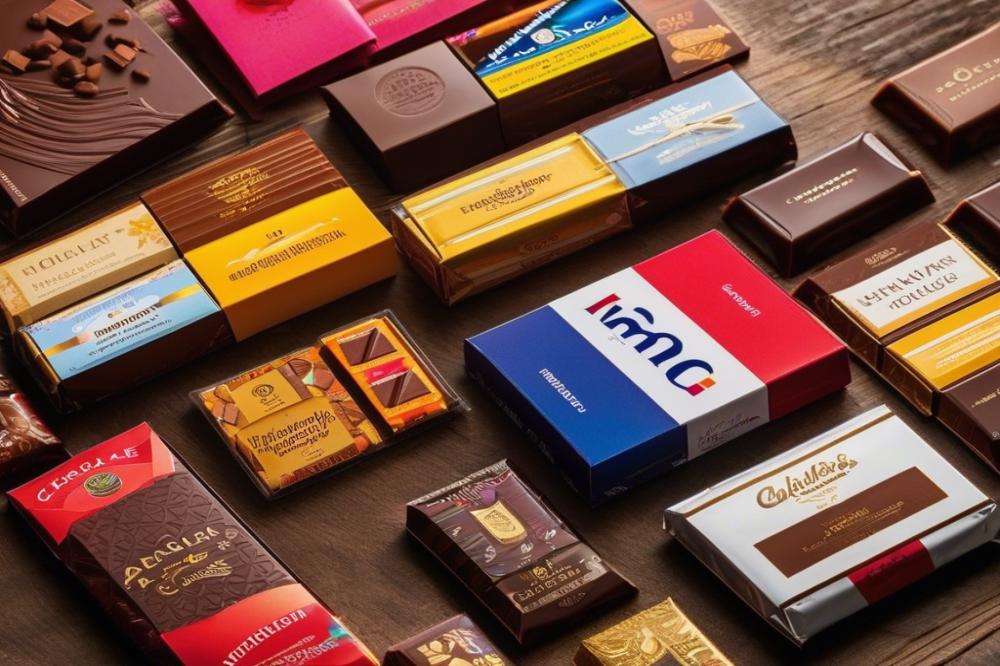Introduction
chocolate bars have captured the hearts of people worldwide. Famous varieties, like Snickers, Mars, and Kit Kat, dominate grocery store shelves. Each offers a distinct blend of flavors and textures. They evoke a sense of indulgence and delight. In this context, one particular brand stands out in South Africa: Bar One. This chocolate bar has become a local favorite, intertwining itself with the cultural fabric of the nation. Its unique combination of nougat, caramel, and chocolate has won over many fans.
The significance of Bar One goes beyond its taste. It tells a story rooted in South African chocolate history. Launched in the early 1990s, the product quickly gained popularity thanks to clever marketing and memorable branding. Advertising campaigns highlighted its energy-boosting properties, making it an ideal snack for active individuals. Over time, it transformed from just another confectionery item into a symbol of nostalgia for many South Africans.
This article will explore several themes related to Bar One. First, we will delve into its fascinating history and development. Next, we will look at effective branding strategies that contributed to its rise. Lastly, we’ll examine how its recipe plays a role in its enduring appeal. The journey of this chocolate bar reflects changing tastes and cultural influences in South Africa.
The Origins of Bar One

The Bar One chocolate bar emerged in the late 1980s as a response to a growing demand for tasty snacks in South Africa. Nestlé, a renowned name in the confectionery industry, spearheaded its creation. This venture aimed to fill a gap in the market for a satisfying and indulgent treat, appealing to various age groups and preferences.
Initially introduced in 1987, Bar One quickly became a local favorite. Marketing strategies effectively highlighted its energy-boosting qualities, making it an excellent snack for busy individuals. The branding made it stand out on shelves, capturing the attention of consumers seeking a quick pick-me-up during their day.
The original recipe combined essential ingredients that contributed to its success. Milk chocolate coated a chewy nougat, providing a delightful mix of textures. This was complemented by a layer of caramel, adding depth and flavor. This combination created a chocolate bar that was both satisfying and delightful, resonating with many South African palates.
Nostalgia plays a role in the appeal of this confectionery. For many, the taste of Bar One reminds them of their childhood, evoking fond memories associated with sharing snacks during family gatherings or school days. Over the years, the chocolate bar has maintained its core recipe, ensuring consistency in flavor that customers trust.
As the years passed, Bar One continued to thrive amid evolving consumer preferences. Its recognition as a staple in the snack market solidified its place in South African culture. The brand also embraced various marketing campaigns, reinforcing its image as a go-to snack that fuels both minds and bodies.
Branding and Marketing Strategies

The journey of branding began with a clear vision for the chocolate bar. Initially, the confectionery aimed to resonate with the hearts of South African consumers. High-quality ingredients and a rich recipe crafted the foundation. Bright packaging and catchy slogans quickly followed. These elements set the tone for a strong identity that consumers would recognize.
Different marketing campaigns played a significant role in popularizing this snack. One campaign featured active lifestyles, illustrating how Bar One could fuel energy. Advertisements included sports figures and adventure themes. These strategies connected the product with excitement and movement. Consumers began to associate the chocolate bar with vigor and enjoyment.
Nostalgia also influenced the brand’s presence. Older generations remember its launch, while new audiences discover it through family traditions. This deep-rooted history helped cement its status as a local favorite. Advertisers tapped into emotional connections, appealing to memories of sharing treats with friends and family. Such tactics made the product feel familiar and cherished.
Advertising campaigns spread across various platforms. Television commercials illustrated fun scenarios that appealed to the youth. Social media further expanded reach, enabling direct interaction with customers. Fans shared their experiences and connected through online discussions. Marketing efforts created a community around the chocolate bar, making it more than just a snack.
All these efforts combined to establish a strong brand presence. The understanding of consumer preferences allowed for tailored campaigns. Focusing on local culture helped in relatable messaging. Each advertisement reinforced Bar One as a must-have treat. Its popularity soared as it became an essential part of South African life.
Cultural Impact and Nostalgia
The chocolate bar has established a significant place in South African culture. For many, it symbolizes more than just a sweet treat; it’s a part of their childhood and memories. Family gatherings often included this local favorite, enjoyed while sharing stories or watching a favorite show on television.
Recollections of youth bring smiles to faces. Adults often speak fondly of how they used to sneak a bar from the pantry or save up their pocket money for a special snack. The excitement of exchanging stories about their favorite flavors evokes a strong sense of nostalgia. Many can remember being rewarded with one after a long day at school, making it a cherished experience that lingers throughout life.
During significant cultural events, the chocolate’s presence has become a tradition. It often appears at birthday parties, holiday feasts, and even community celebrations. It embodies moments of joy where people gather to celebrate together. Marketing campaigns tapped into this emotion, linking the brand with shared experiences and togetherness. Its branding emphasized family and community, which resonated deeply with consumers.
In the backdrop of South African history, this confectionery emerged as a comfort during trying times. Many found solace in indulging in a delicious bar when the outside world seemed overwhelming. Even at sporting events, fans often bring a Bar One to enjoy during matches, making it an icon of camaraderie and team spirit.
Although it has a simple recipe, its impact is profound. At school, classmates would trade theirs for other snacks, creating bonds over shared tastes. The chocolate bar became a staple in lunchboxes, a quick pick-me-up for students and workers alike. Many weeks have been made brighter by stopping at a store for an afternoon treat.
Through various life stages, it remains a common thread connecting people. Reminiscing about the excitement of unwrapping one as a child often brings laughter and warmth. Such stories reinforce how deeply ingrained this snack has become in daily life and memory. It acts as a reminder of simpler times and treasured relationships, continuing to hold a valuable spot in the hearts and minds of many South Africans.
Evolution of the Recipe and Product Variations
Changes to the original recipe of the chocolate bar have played a significant role in its lasting appeal. Over the years, several adjustments were made to improve taste and texture. These updates reflected the evolving preferences of consumers. Notably, the balance of chocolate, nougat, and caramel has shifted, making it even more enjoyable for snack enthusiasts.
Several new variations have emerged since the product’s introduction. Limited-edition flavors and seasonal offerings have captured the attention of the public. Additionally, popular choices like mint and salted caramel created excitement around the classic confectionery. Each new flavor released added to the brand’s reputation as a local favorite, drawing in both old fans and new consumers eager to explore.
Branding and marketing strategies also evolved alongside the product itself. Campaigns focusing on nostalgia have been effective in connecting with older generations. By reminding them of shared moments, these strategies enhance emotional ties to the chocolate bar. Younger audiences, however, resonate more with contemporary packaging and exciting advertising, introducing them to South Africa’s beloved snack.
Consumer preferences have adapted with these changes. Familiar flavors remain popular, but people are now more open to trying novel varieties. This shift has allowed the company to maintain its relevance in a competitive market. As new trends arise, particularly within the confectionery sector, the brand continues to cater to diverse tastes while honoring its rich history. This blend of evolution and tradition is key to the chocolate bar’s sustained success.
Bar One in the Context of South African Snacks
Comparison with Other Popular South African Confectionery
The chocolate bar has carved its niche among various beloved sweets in South Africa. Popular options include Crunchies, Tex, and Fizzers. These snacks each come with their unique flavors and textures. When evaluating taste and ingredients, the Bar One stands out with its rich nougat and caramel layered with smooth chocolate. While other brands focus on one flavor, Bar One combines multiple elements into a single indulgent experience.
Analysis of Its Position Among Local Snacks and Competition
In the competitive landscape of local favorites, this snack has maintained a strong position. With considerable marketing efforts and effective branding, it has reached a wide audience. While local alternatives like Biltong and Droëwors attract savory snack lovers, chocolate bars tend to dominate in sweet cravings. Bar One holds a significant share of the market, helped by its catchy advertising campaigns and targeted promotions.
The Perception of Bar One in the Global Chocolate Market
Internationally, the perception of this South African product remains specific. When compared to giants like Snickers or Mars, it is less known. However, the brand’s nostalgic appeal plays an important role. Many South Africans abroad reminisce about indulging in the snack during their school days. This emotional connection enhances its image as a treasured treat. Despite being less prominent on global shelves, its local reputation continues to shine brightly.
Final Thoughts on the Legacy of a Chocolate Icon
Throughout this article, we have explored the journey of a beloved chocolate bar that has captured the hearts of many South Africans. From its introduction in the market to its rise as a local favorite, the story reflects a mix of nostalgia and cultural significance. Remembering the unique marketing strategies and memorable ad campaigns shows how effectively it resonated with the public. Consumers embraced the blend of taste, packaging, and branding, leading to lasting popularity.
This chocolate icon has become more than just a sweet treat; it symbolizes comfort and familiarity in the South African landscape. People of all ages have shared memories associated with this candy. Whether it be a snack after school or a reward during special occasions, it has played a role in many lives across generations. Its ability to bring people together is remarkable.
The future seems promising for this confectionery staple. With ongoing innovations in flavor and presentation, the brand may continue to grow in an ever-evolving market. As new sweets come and go, enduring favorites often find ways to adapt and maintain relevance. With a loyal customer base, it stands a strong chance to continue thriving. Embracing new trends while holding onto cherished traditions may very well shape its upcoming chapters.
As we reflect on its legacy, it’s clear that the chocolate bar has firmly established itself as a part of South African culture. Fans can anticipate more delicious moments ahead as this classic remains a sweet reminder of home.



